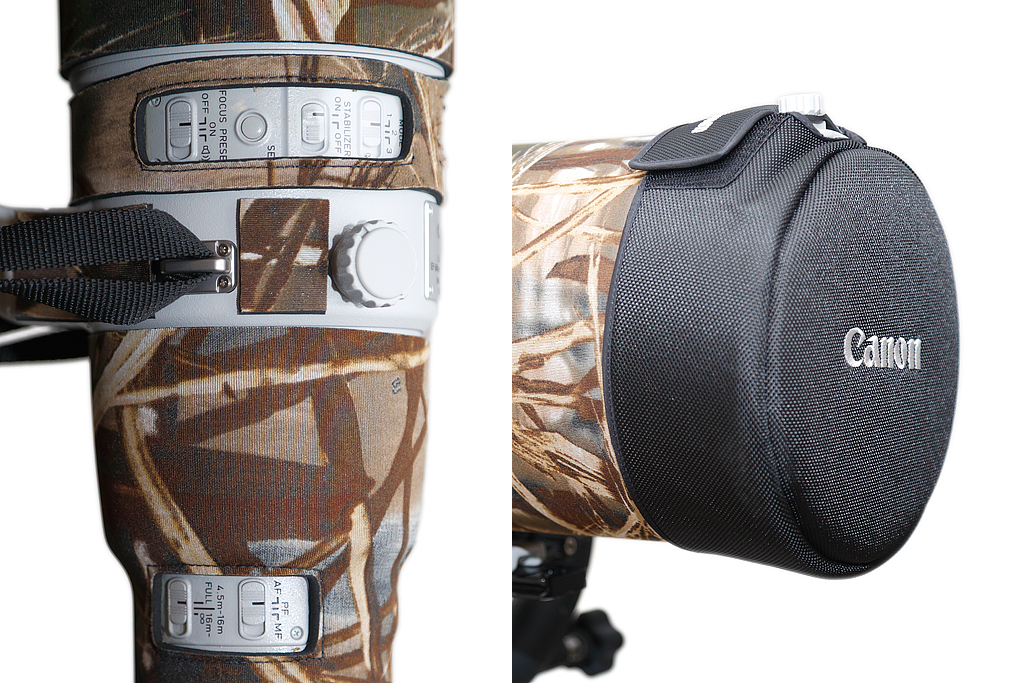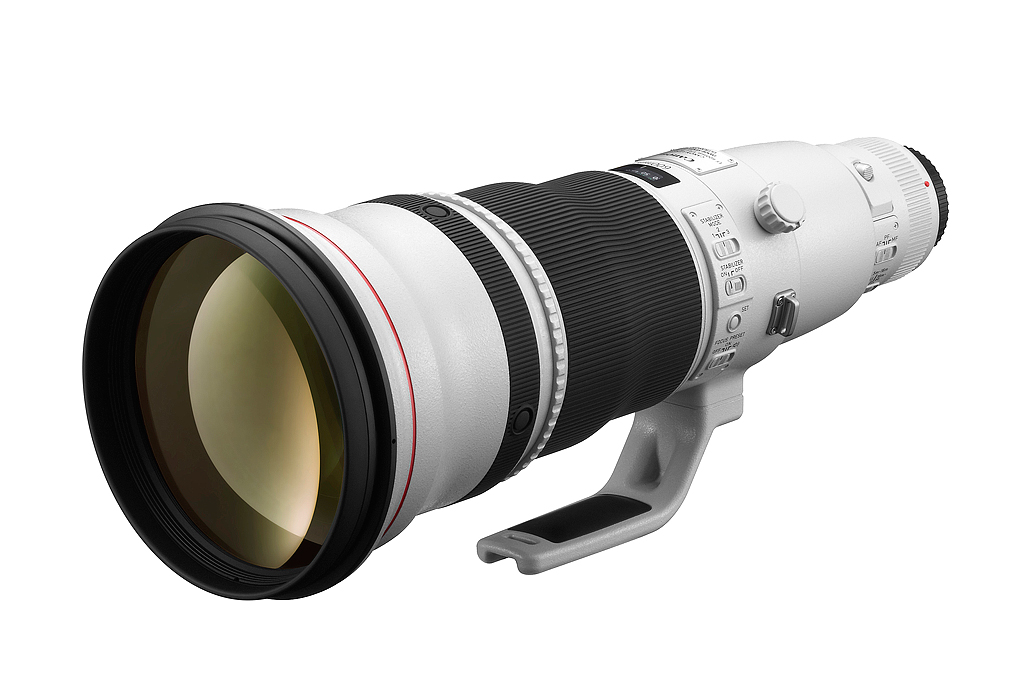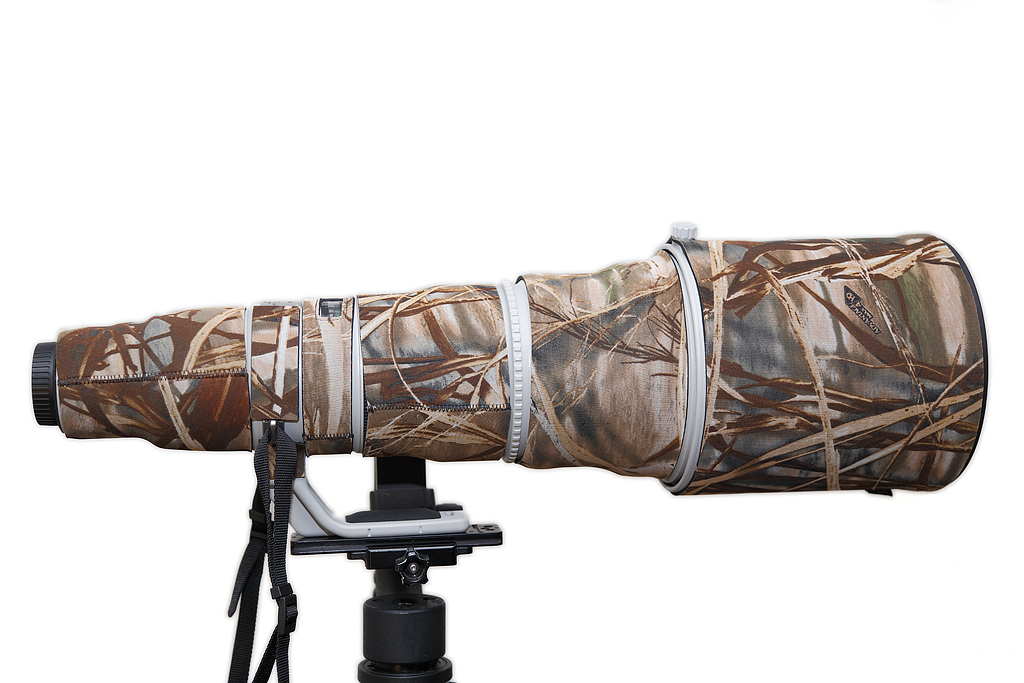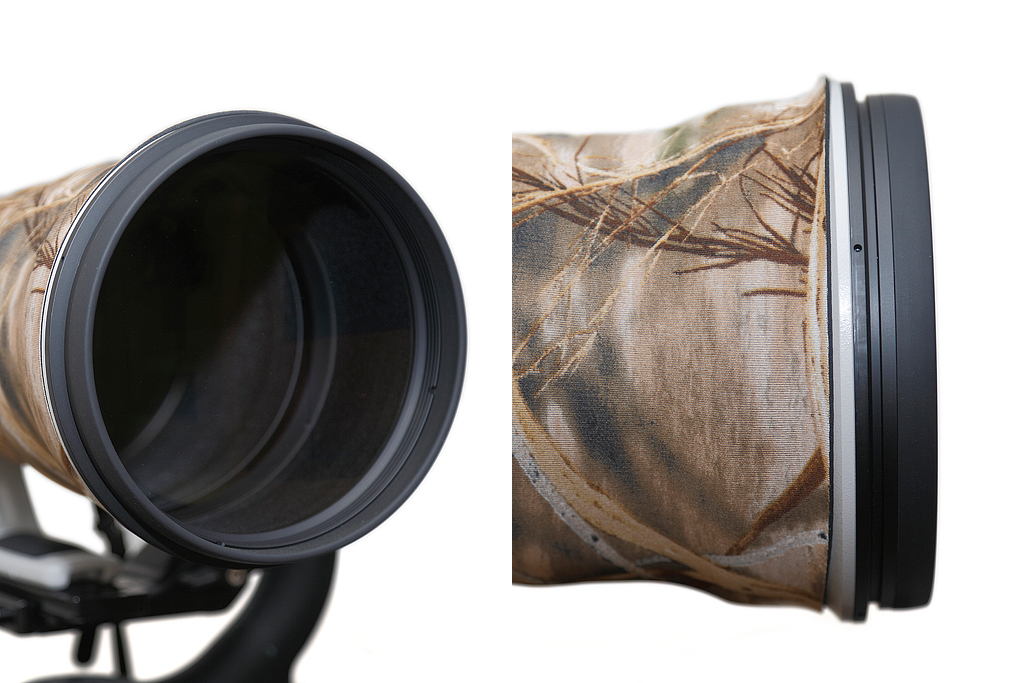EF 600mm f/4 IS II
Introduction
Introduced in 1999, the original EF 600mm f/4L USM IS has been a popular lens among nature and wildlife photographers in the past decade. The long focal length and superior optics makes this lens ideal for avian photography. The original EF 600mm f/4 IS was a very sharp lens and it performed very well with the Canon EF extenders, including the latest EF 1.4X and 2X extender III. Despite great optics and the versatility to cover focal lengths from 600mm to 1200mm, the original EF 600mm f/4 IS had one significant disadvantage, its weight. At 11.8lbs the lens is difficult to carry around and handhold day in and day out for most photographers. Many experienced avian photographers prefer to handhold their rig for in-flight shots where the old lens’s weight could become prohibitive. For this reason, the smaller, lighter sibling, the EF 500mm f/4L IS USM became more popular among many avian photographers, in particular flight shooters.
In Feb 2011, Canon introduced the 2nd generation of their super-telephoto lenses after more than a decade. The most striking figure in the spec sheet of the new lenses is the weight. The new lenses are 20-30% lighter than their predecessors. In particular the EF 600mm f/4L IS II weighs 8.65lbs which is ~27% lighter than the older model and almost as light as the original EF 500mm f/4 IS USM (8.54lbs). Many people found the original EF 500mm handholdable. They can now increase their focal length to 600mm with no penalty in weight.
In this short article, I will provide a summary of field performance for the EF 600mm f/4L IS II with respect to handheld avian photography.
Sept 2012 update: Soon after I received the lens, Canon USA issued a firmware update for the series II super-telephoto lenses. The firmware 1.1.1 changes the control algorithm of the focus drive, and enhances the drive’s responsiveness for more precise focus and adjustments. It enhances the AI servo AF capability of the lenses to track objects that move irregularly in sports events, such as soccer or rugby according to Canon. My lens received the firmware update from CPS in south California. I did not observe a noticeable difference in AI-servo tracking performance before and after the firmware update. However, given the erratic nature of my subject, birds in flight, it is not possible to perform a relevant controlled test and it is difficult to notice small differences. Perhaps this update would be more relevant if you shoot the particular sports mentioned above. The images in this review are taken with the older as well as the new firmware.
Build and handholding
The new EF 600mm f/4L IS II features a high-quality rugged construction. The barrel is made entirely from magnesium/titanium. Rubber is only used on the focus ring and the ring housing the four AF-stop buttons for a better grip. O-rings seal the lens mount as well as the focus ring to protect the internal elements against water/dust. The focus ring is very smooth. The AF operation is rapid, smooth and completely silent as expected. One major improvement over the original super-telephoto lenses is the tripod collar. The tripod collar now features a a very smooth and almost “fluid” rotation mechanism with just the right amount of dampening. It locks into portrait/landscape positions very easily. Kudos to Canon for improving the collar.
The front of the lens as well as the ring grove for mounting the lens hood is covered with rubber and painted black. Unlike the old lenses, tightening the locking knob on the hood will no longer cause paint chips in this area. The supplied strap is now padded and much more comfortable when wearing around the neck or shouldering the lens for extended periods in the field. Note that it was difficult to obtain padded aftermarket straps for the old super-telephoto lenses as the strap mounts were too narrow. The provided front lens cap however feels somewhat cheap compared to the old leather caps. it is supported at its base but it is not deep enough. It becomes almost unusable if you cover the hood with a lens coat. The suitcase that Canon provides for carrying the lens now includes straps as well and it is slightly thinner making it carry-on size compatible, although most people prefer to use a roller bag.




Thanks for the review Ari. Amazing kite photos.
Wonderful Review and images Ari. Thank you
Your White-tailed kite series is just ASTOUNDING and would deserve a whole photo-book for itself! The 39 th just threw me off my chair!
A true GREAT series! Congrats!
Great review and awesome pictures!
Thanks for the review Ari.
Many thanks for the excellent review! I was on the fence about ordering this lens for BIF photography, but after seeing your results, I just went ahead and ordered it. I doubt if I’ll ever get images as good as your kite photos, but without this glass, there wouldn’t even be a chance.
Ditto on Chuck Murphy’s reply.
Hi Aria,
If I can not handle the 600mm there are any lenses that you can recommend. I will have the trip to Africa in this September. I have Cannon 7D and lenses 100-400mm cannon. I will take the picture of mammal and people. Which camera or lenses that you can recommend please.
Hello,
I recommend an EOS 1D series camera for best results. The 100-400 is a light lens, but its optics are not great. The new 300 f/2.8 IS II with extenders 1.4XIII and 2XIII is a better choice if you require professional quality photos.
Hi Ari,
Thanks for a great review, not to mention the fantastic pictures. As I’m thinking about getting this lens – first time to get a lens of this type, could you give some tips on how to inspect and test this lens (to make sure it is a good copy)? As other models in the Canon lens lineup often have varied quality control issues, I hope to know how to inspect a lens of this value to be confident it is of good quality.
-Jason
Hi Jason,
Thanks for your comments. Bad vs. good copy is mostly an internet myth in my view. I yet have to see a “lemon” lens after 8 years of using Canon gear. Most of the time, inexperienced users confuse their own error or bad technique with quality variation.
As long as you buy from an authorized Canon dealer you will be fine.
best
Ari
Hi Ari,
Thanks for the great review of the lens and for motivating me. Your photos are great!
I plan on getting this lens. I currently shoot 5D mk3 and 7D. Have you tried this lens with 1.4x on the 7D (is that too much… maybe for handheld the lever arm is too much) ?
Thanks again,
Ed
Thanks Ed,
yes, you can hand hold this lens with either 1.4X or 2X with no issues at all, I do it all the time. I only use with 1D bodies.
best
Great review. How hard is it to carry around the 600 iIS ii searching for birds? I am generally interested in small birds. Initially was looking at 500 IS ii, but I always have hard time on reach and think I should go with 600.
Hi Naren,
I dont’ find it difficult to carry the lens
Thanks for the reply Ari. How do you carry once you are in the field? Will you carry it on the tripod, or use a lens string or carry in a bag. I rented 600mm is ii last week and was carrying it in a bag(from lensrental) and it was hectic. Ultimately I could not find a bird that I can photograph!
Hi I don’t use a tripod, I just carry the lens attached to a black rapid II. I don’t use a bag in the field.
Hello Arash,
I need your advise again. Couple of years ago you advised me to purchase EF 100-400mm F4 II. That subsided the temptation of purchasing EF 600mm f/4 II for awhile. However, the price of EF 600mm went down recently, the new lens sales for $9.5 K now. Given that the version III of EF 600mm lens has been introduced as well as canon’s new RF mount, I would like to get your opinion whether I should further delay 600mm lens purchase or give into temptation and buy one. I don’t want to buy an expensive lens that may become obsolete soon. Any help would be appreciated.
Regards,
Amir
Hi Amir,
new lenses and cameras come out all the time, but we live in the moment. If we want to wait for the next big thing we would be waiting the rest of our lives and missing many opportunities. A lens isn’t an investment vehicle, it’s a tool to the job and any lens will become obsolete and worthless at some point. My recommendation is always to get the best gear you can afford for the goal you are trying to achieve
Best
Arash
Hi Ari,
I’ve just discovered your site and your photos are of a quality I strive to reach. Great images and I’m glad I found you.
I’m considering a couple of your guides. I have the 7D ii and am looking at your Pro Photographers Guide to Post Processing and the Canon DPP4 guide. You say Adobe Photoshop CS4 is required but I found two CS4 downloads. One is $275 and the other is for photographers and is $42. Which one? Could you also be more specific re: the Neat Image software. I’m on an HP desktop with Windows 7 Home Premium. I would appreciate a little more clarity so I get what I need the first time around.
Thank you in advance for your assistance and your expertise.
Steve
Hi Steve, thanks for your comments.Adobe Photoshop CS4 is the minimum you need, however CS4 is about 10 years old now and the new neat image plugin may not work with it. The latest Photoshop is photoshop CC and it is subscription based, i.e. $10 a month which is much better than buying obsolete software
hope this helps
Hello again Ari,
I looked at your site again and am just as blown away by your images as I was the first time I saw them.
I last wrote to you on Nov. 4th (above) and since then I picked up PSE 2020 and am wondering if this will work with DPP4 and Neat Image? I don’t really care to do the subscription thing if I can avoid it. Let me know if you think the PSE will work and I’ll order the guide.
Thank you once again,
Steve
Hi Steve
Thanks for your comments!
DPP4 is independent of Photoshop. Neat Image or any other plugin only work with the full version of Adobe PhotoShop. There is really not much you can do with Photshop elements as it lacks the sharpening and resizing algos used in the real software, if you are interested in professional quality images you need to get the full version.
best